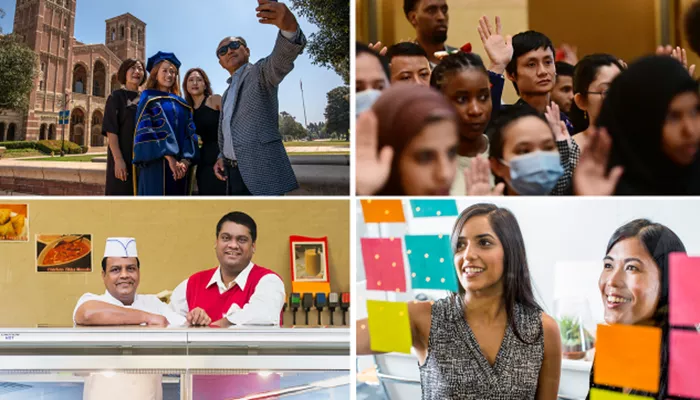Asian Americans represent a unique demographic in the United States, as they are the only major racial or ethnic group where the majority—54% of 24 million—are immigrants. This figure rises to 67% among Asian adults.
Diverse Origins and Migration Experiences
Asian immigrants come from various regions across Asia, forming a significant portion of the U.S. immigrant population. Notably, three of the largest immigrant groups in the U.S. hail from India (2.8 million), China (2.5 million), and the Philippines (2 million). Their diverse backgrounds shape their experiences with the U.S. immigration system, influencing their perspectives on federal immigration policy.
Positive Assessments Amid Concerns
According to a recent Pew Research Center analysis of its 2022-23 survey, Asian immigrants generally view their lives in the U.S. positively compared to their home countries. Approximately 77% believe their standard of living is better than their parents had in their origin countries. However, there is less optimism regarding their children’s future, with over half expressing concerns about the country’s direction. Still, 74% would choose to migrate to the U.S. again.
Call for Immigration Reform
Many Asian immigrants (59%) feel the U.S. immigration system needs significant changes. Attracting highly skilled immigrants is a top priority for 86% of respondents.
Survey Details
These insights are drawn from a Pew Research Center survey involving 7,006 Asian American adults, including 5,036 Asian immigrants, conducted between July 5, 2022, and January 27, 2023.
Key Areas of Focus
The report covers various topics, including:
1. Experiences of Asian American immigrants adjusting to life in the U.S.
2. Their views on quality of life in the U.S.
3. Perceptions of the U.S. immigration system.
4. A brief history of Asian immigration.
Reasons for Immigration
Asian immigrants come to the U.S. for various reasons. About 28% seek to reunite with family, while 27% pursue economic opportunities and 26% seek education. A smaller group (7%) immigrates to escape conflict or persecution. The reasons differ among ethnic groups; for instance, 40% of Filipino and Indian immigrants cite economic opportunities compared to lower percentages among Korean (26%), Chinese (16%), and Vietnamese (9%) immigrants. Additionally, 32% of Vietnamese immigrants came to escape conflict, while fewer than 5% from other groups did so.
Adjusting to Life in the U.S.
Asian immigrants face several challenges upon arriving in the U.S., including learning English. Nearly all (91%) believe English proficiency is crucial for success, and two-thirds (64%) learned it before immigrating. Recent arrivals are more likely to have learned English prior to their move than those who immigrated over 20 years ago (89% vs. 57%).
Financial assistance is also a significant aspect of their adjustment. About 58% report receiving financial help after arriving, with variations based on their reasons for immigrating. For example, 64% of those fleeing conflict received government assistance within their first six months, compared to about 10% of those who immigrated for educational, economic, or family reasons.
Comparing the U.S. to Origin Countries
Many Asian immigrants view the U.S. favorably compared to their home countries. Key findings show that 77% believe the U.S. offers better opportunities, 67% view it as superior in terms of free speech, and 66% consider it a better place to raise children. However, only 15% think family ties are stronger in the U.S.; 60% feel their home countries excel in this regard.
Priorities for U.S. Immigration Policy
The survey also highlighted Asian immigrants’ views on U.S. immigration policy goals. Among the findings:
1. 86% prioritize attracting highly skilled immigrants.
2. 82% want to simplify the process for U.S. citizens or legal residents to sponsor family members.
3. 76% support stricter policies to prevent visa overstays.
These insights underscore the complex perspectives and priorities of Asian American immigrants as they navigate their lives in the United States.
Related topics:
- Spain Turns to Immigrants to Boost Its Economy
- Trends and Effects of Immigrant Deportations
- Ohio Workers Support Haitian Immigrants!


